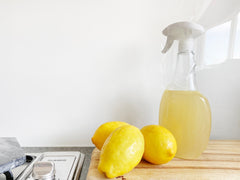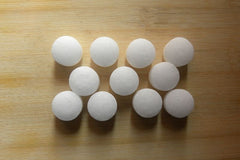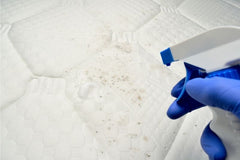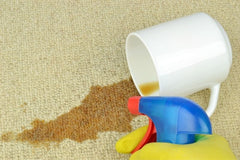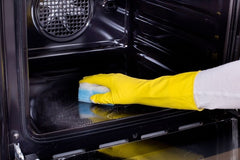How To Make Natural Insect Repellents

During warm weather months, bugs can be highly problematic, especially for young children who tend to scratch insect bites. While there are many insect repellents you can purchase, a natural alternative is the safest and better solution. Today you will learn how to make natural insect repellents but, before that, let’s see why using a homemade bug spray is better than using a commercial one.
Why Homemade Bug Spray?
There is nothing wrong with hating bug bites or doing your best to avoid them. However, using a commercial insect repellent shouldn’t be your first option. There are plenty of natural ways to keep bugs away.
Why are commercial insect repellents not good? Because most of them contain N,N-diethyl-meta-toluamide, also known as DEET. DEET was deemed safe for adults and children but is still a controversial substance. Some studies suggest that DEET exposure can increase the risk of brain changes, particularly in young children.
Essential Oil Insect Repellent Recipe
This essential oil insect repellent is very effective and it offers natural bug protection. However, since it is not really recommended to apply essential oils topically without diluting them first, we recommend applying this natural insect repellent on clothing rather than directly on the skin.
If you don’t have all the essential oils listed in the recipe, you can use any combination of them because all have bug-repelling properties and are highly effective against mosquitos and other bugs.
Tools
- Spray bottle or glass bottle to store
Ingredients
- 30 drops of geranium essential oil
- 30 drops of citronella essential oil
- 20 drops of eucalyptus essential oil
- 20 drops of lavender essential oil
- 1 tablespoon rubbing alcohol
- ½ cup natural witch hazel
- ½ cup water (you can also use vinegar if you don’t mind the smell because it has powerful antibacterial properties)
- 1 teaspoon glycerin
Directions
- Place the essential oils and rubbing alcohol in the spray bottle and shake to combine.
- Then add in the witch hazel and shake again.
- Pour in witch hazel and shake to mix.
- Lastly, add glycerin and shake for the last time. Glycerin is not a mandatory ingredient but it helps keep the mixture from separating. If you don’t have glycerin on hand, skip this step and shake the spray bottle before every use.
DIY Insect Repellent Recipe Alternatives
While the essential oil insect repellent is a great bug spray for clothing, it is best to avoid applying it directly on the skin, especially if you have sensitive skin.
The best option is to use the essential oil insect repellent on clothing articles and one of the following bug sprays applied directly on the skin. The recipes below are not as effective on their own but they are safe for skin application. And, if you also use the essential oil insect repellent for your clothing, the bugs will definitely stay away from you.
Dried Herbs Bug Spray
Tools
- Spray bottle;
- Small pot;
- Sieve;
- Pot lid.
Ingredients
- 1 cup of distilled water;
- 1 cup of rubbing alcohol;
- 3-4 tablespoons dried herbs – mint family herbs, such as peppermint and spearmint. You can also add citronella, lemongrass, or lavender dried herbs.
Directions
- In a small pot, boil the distilled water and add the dried herbs of choice. It is important to use at least one herb that’s part of the mint family, as those are effective insect repellents. The rest is up to personal preference.
- Mix the water with the herbs and cover the pot with a lid.
- Let the mixture cool completely.
- When the water is cool, strain the herbs.
- Add rubbing alcohol and transfer the mixture to a spray bottle.
- Shake to mix.
You can store this insect repellent in the fridge if you want. This will make the insect repellent double as a cooling and refreshing spray.
Vinegar Insect Repellent Recipe
Tools
- Glass mason jar with lid;
- Sieve;
- Tincture bottles;
- Spray bottle.
Ingredients
- 32 ounces apple cider vinegar;
- 1 tablespoon dried sage, mint, thyme, lavender, or rosemary.
Directions
- Place the dried herbs in the mason jar.
- Pour the vinegar over the dried herbs.
- Seal the jar tightly with the lid.
- Store the glass jar at room temperature.
- Shake every 2-3 days.
- After 3 weeks, strain the herbs and transfer the liquid to tincture bottles. Store them in the fridge.
- To use, dilute the insect repellent with water in a spray bottle and apply it on the skin as needed. The recommended water-tincture ratio for dilution is 1:1.




